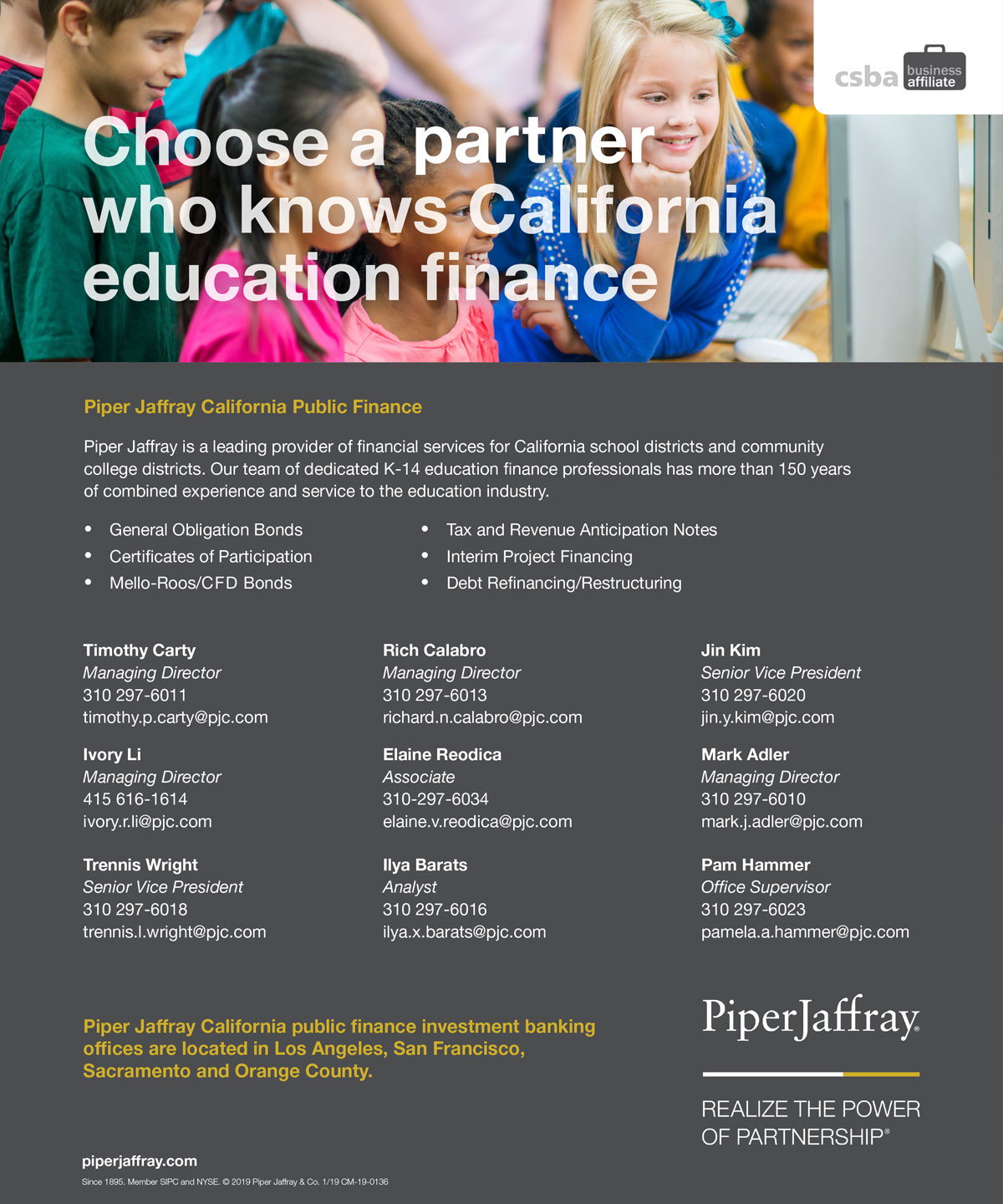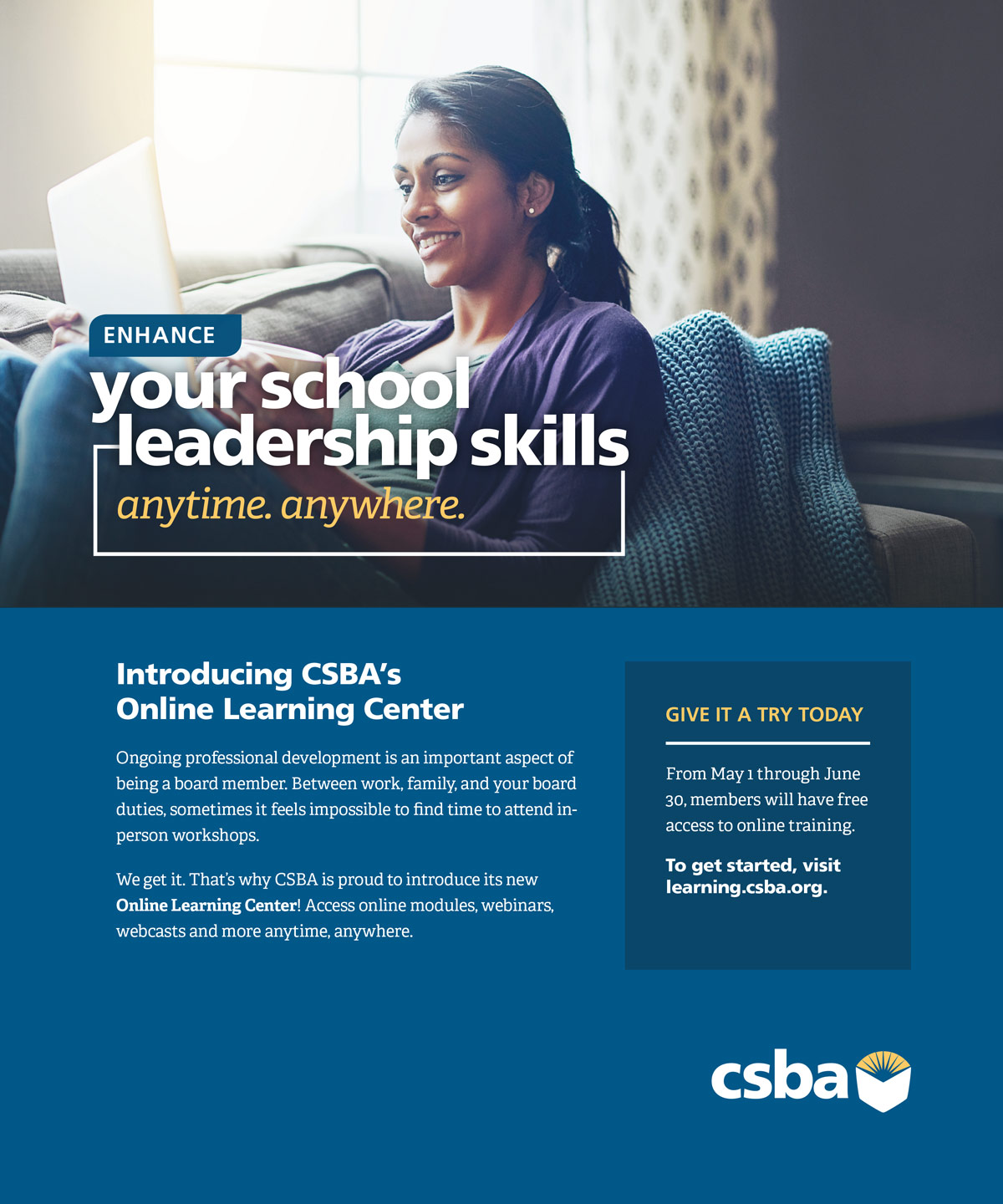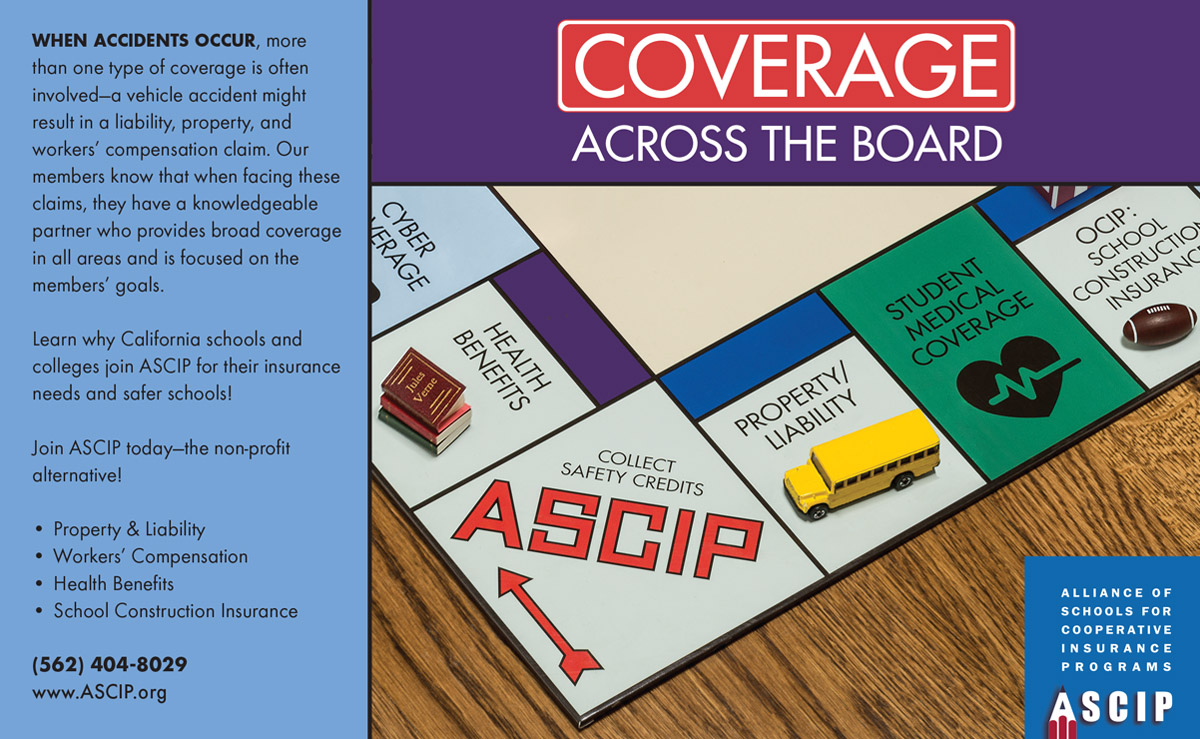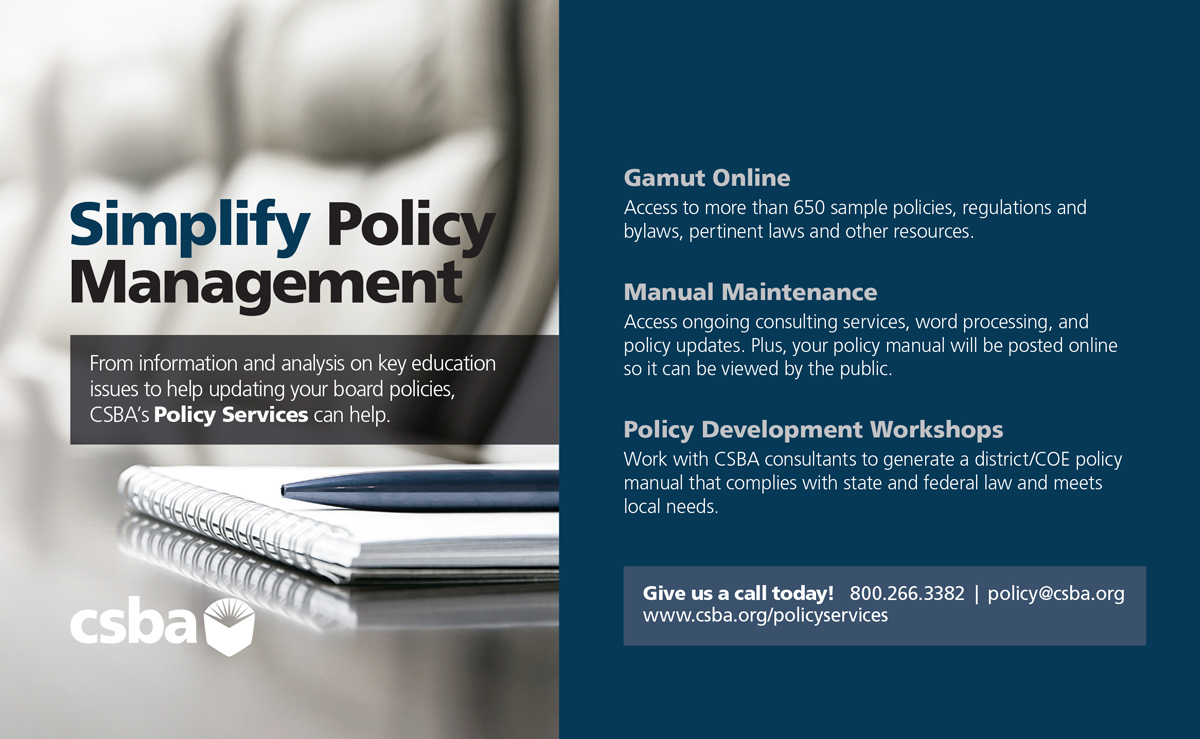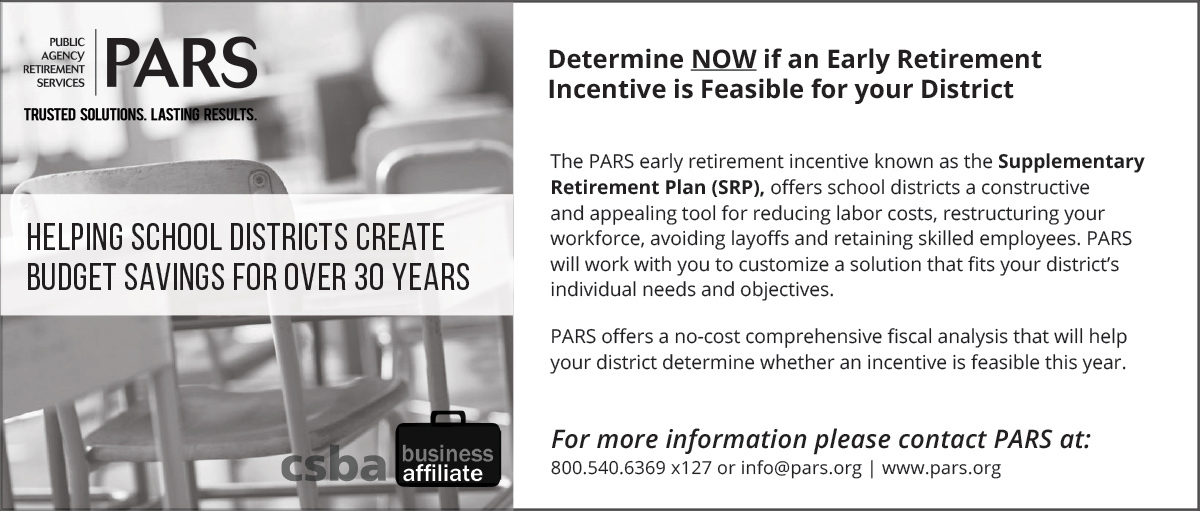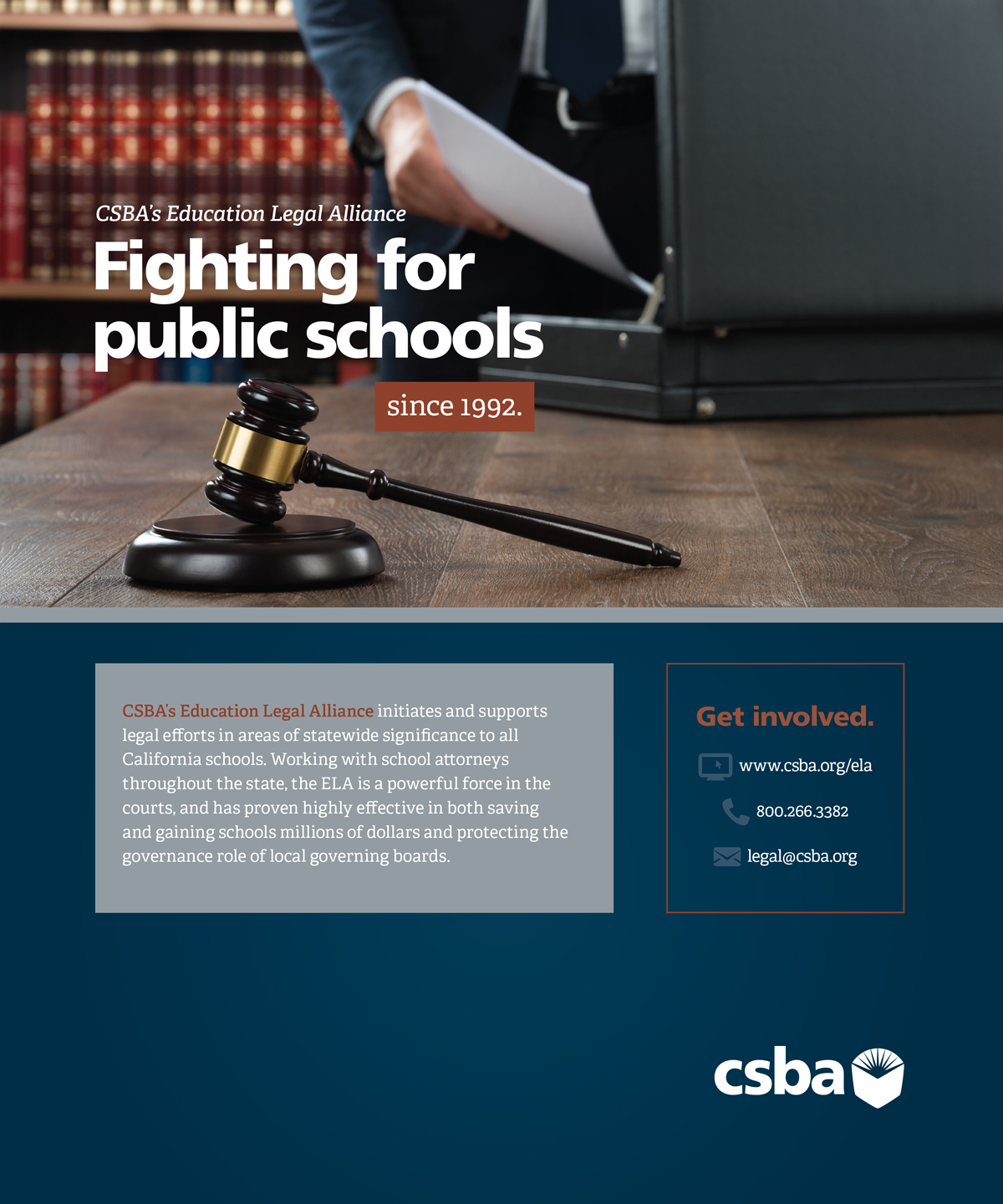
Spring 2019
by Hugh Biggar
by Vernon M. Billy
by Deb Dudley, Arati Nagaraj, Sepideh Yeoh
by Kathryn Meola
By Marci McFadden
By Andrew Cummins
Interview with Darshana Patel
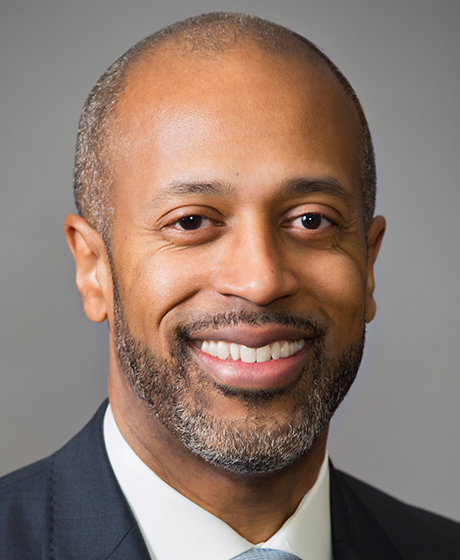
his past January, educators across the state (and nation) were fixated on the Los Angeles Unified School District’s six-day teacher’s strike. The LAUSD strike was followed almost immediately by a seven-day work stoppage in Oakland and a highly publicized one-day walkout for Sacramento USD teachers on April 11.
These bargaining conflicts in some of California’s largest urban school districts are representative of the funding crisis looming large in districts across the state. The undeniable fact is that these strikes — and threats of others possibly to come — are occurring because of decades of underinvestment in our public schools, and because the Legislature often views the Proposition 98 school funding formula as a ceiling versus a floor for funding.
In essence, the state has been “shorting” our schools and our students of the funding that they deserve — and it is a “big short.” While California’s economy and state general fund revenues have been growing at a steady pace, it has recently been noted by several of my colleagues that schools in California have been experiencing a “silent recession.” While this recession may have been “silent” for the general public, CSBA has been sounding the alarm about our burgeoning education funding crisis for more than a decade.

Region 1, Del Norte County US
Sherry Crawford
Region 2, Siskiyou COE
A.C. “Tony” Ubalde, Jr.
Region 3, Vallejo City USD
Paige Stauss
Region 4, Roseville Joint Union HSD
Alisa MacAvoy
Region 5, Redwood City ESD
Darrel Woo
Region 6, Sacramento City USD
Yolanda Peña Mendrek
Region 7, Liberty Union HSD
Matthew Balzarini
Region 8, Lammersville Joint USD
Region 9, Atascadero USD
Susan Markarian
Region 10, Pacific Union ESD
Suzanne Kitchens
Region 11, Pleasant Valley SD
William Farris
Region 12, Sierra Sands USD
Meg Cutuli
Region 15, Los Alamitos USD
Karen Gray
Region 16, Silver Valley USD
Katie Dexter
Region 17, Lemon Grove SD
Wendy Jonathan
Region 18, Desert Sands USD
Region 20, Santa Clara USD
Kelly Gonez
Region 21, Los Angeles USD
Nancy Smith
Region 22, Palmdale SD
Helen Hall
Region 23, Walnut Valley USD
Donald E. LaPlante
Region 24, Downey USD
Crystal Martinez-Alire
Director-at-Large American Indian,
Elk Grove USD
Gino Kwok
Director-at-Large Asian/Pacific Islander,
Hacienda La Puente USD
Director-at-Large African American,
Monterey Peninsula USD
Heidi Weiland
Director-at-Large County, El Dorado COE
Joaquín Rivera
Director-at-Large Hispanic, Alameda COE
Dana Dean
CCBE President, Solano COE
Chris Ungar
NSBA Director, San Luis Coastal USD
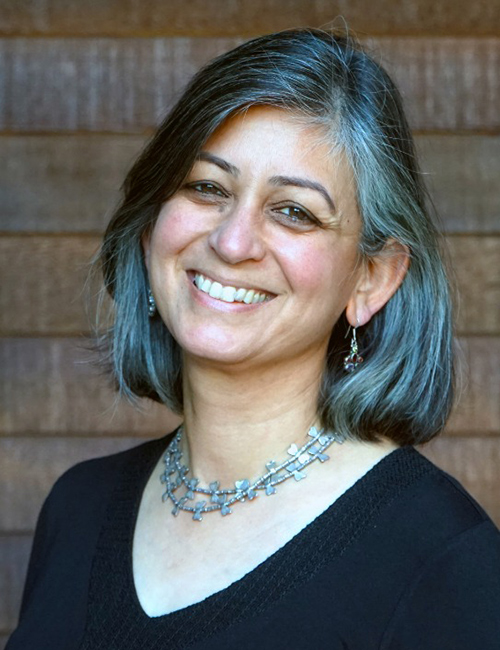
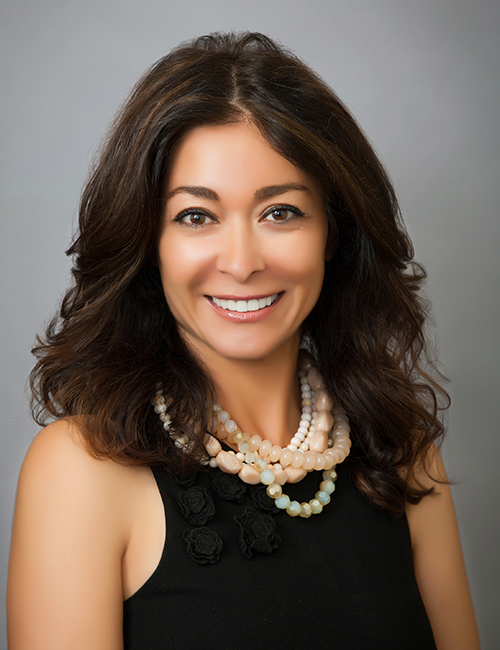
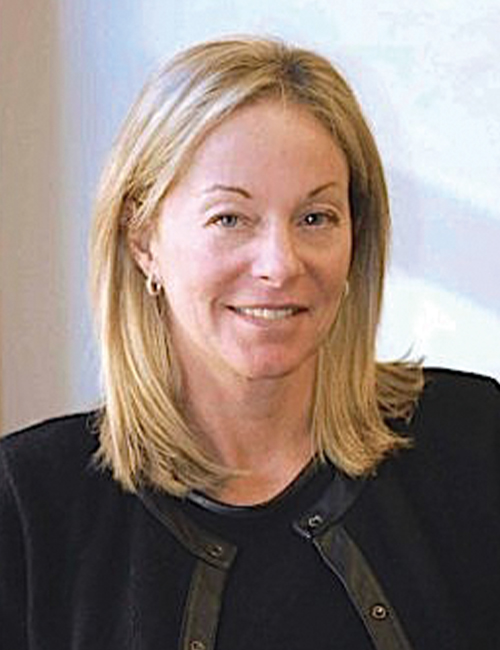
by Arati Nagaraj, Sepideh Yeoh, and Deb Dudley
Best practices to select board officers
What are some open, fair and transparent practices to select board officers? What falls under the responsibility of each officer?
For county boards of education, it is important to refer to Education Code 1009. It requires that a president is elected and that the county superintendent is appointed as the secretary and executive officer to the board at the annual organizational meeting.

Troy Flint, tflint@csba.org
Managing Editor
Kimberly Sellery, ksellery@csba.org
Marketing Director
Serina Pruitt, spruitt@csba.org
Staff Writers and Contributors
Hugh Biggar, hbiggar@csba.org
Andrew Cummins, acummins@csba.org
Aaron Davis, adavis@csba.org
Graphic Design Manager
Kerry Macklin, kmacklin@csba.org
Senior Graphic Designer
Mauricio Miranda, mmiranda@csba.org
Circulation and Advertising
csba@csba.org
Emma Turner, La Mesa-Spring Valley SD
President-elect
Xilonin Cruz-Gonzalez, Azusa USD
Vice President
Tamara Otero, Cajon Valley Union SD
Immediate Past President
Mike Walsh, Butte COE
CEO & Executive Director
Vernon M. Billy
California Schools (ISSN 1081-8936) is published quarterly by the California School Boards Association, Inc., 3251 Beacon Boulevard, West Sacramento, CA 95691, (916) 371-4691. $2 of CSBA membership dues goes toward the subscription to California Schools magazine for each board member and superintendent. The subscription rate for each CSBA nonmember is $20. Periodicals postage paid at West Sacramento, CA and at additional mailing office. Postmaster: Send address changes to California Schools, 3251 Beacon Blvd., West Sacramento, CA 95691.
Articles submitted to California Schools are edited for style, content and space prior to publication. Views expressed are those of the authors and do not necessarily represent CSBA policies or positions. Articles may not be reproduced without written permission of the publisher. Endorsement by CSBA of products and services advertised in California Schools is not implied or expressed.

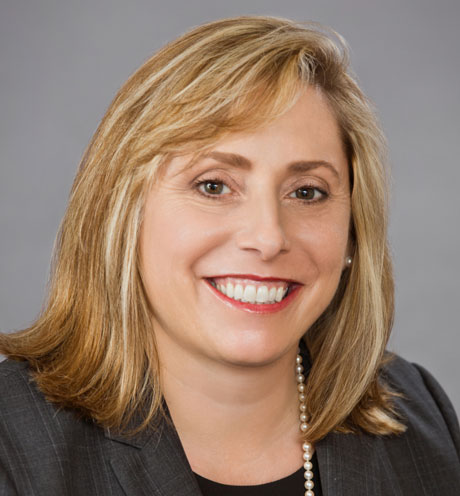
he United States Supreme Court has long recognized that local government agencies with at-large voting schemes (i.e., where voters throughout the entire jurisdiction vote for open governing body seats) rather than by-district voting (i.e., each voter only votes for the open seat in his/her district) may operate to minimize or cancel out the voting strength of minorities. Section 2 of the Federal Voting Rights Act of 1965 targets, among other things, these discriminatory at-large election schemes. By enacting the California Voting Rights Act (California Elections Code §§14027-14032), the California Legislature intended to further expand protections against vote dilution over those provided by FVRA.
Passed in 2001, the CVRA seeks to address at-large voting systems in local government agencies including school districts, wherever there is evidence of a history of “racially polarized voting” and/or vote dilution of members of “a protected class” (i.e. members of a racial or ethnic minority). This can be shown if the following elements are present: 1) a voting bloc of protected class members; 2) a bloc of voters outside of the protected class; and 3) candidates favored by the protected class voters that have historically not been elected. In theory, transitioning from an at-large to a by-district election system not only increases the strength of the minority vote, but also lowers the barrier for entry to run for a seat.
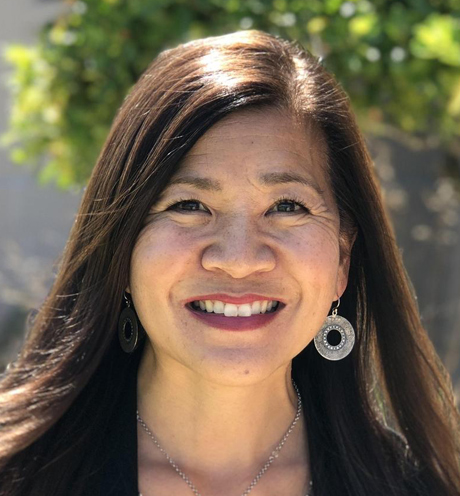
t is 15 minutes before the first bell rings at Central Coast High School — an alternative school along the Central Coast overlooking Monterey Bay in Seaside, California — and the school is bustling with students arriving early to socialize, talk with their favorite teachers or receive extra academic supports, and eat breakfast in the newly created “Student Lounge and Career Center,” a space that evolved from a classroom into a warm, welcoming environment thanks to staff and student creativity and outside donations.
The school still has ways to go, but this is a vast improvement over three years ago when many students struggled with arriving late or missing first period all together.
Central Coast High School, along with the Community Day School and Independent Study, are part of the Monterey Peninsula Educational Options Program. Central Coast High School is a continuation school serving 11th- and 12th-graders not on track for graduation. The Community Day School has two classrooms that serve middle and high school students who have been expelled or referred due to extreme behavior. Lastly, Independent Study serves students ranging from kindergarten to 12th grade who are looking for flexibility and an alternate approach to learning.
class act: Best practices in action
class act:
Best practices in action
class act:
Best practices in action
or many teachers, job evaluation is a once-a-year event that provides inconsistent feedback on educator practice and has little connection to professional development or student achievement. A San Diego County Office of Education program aims to change that paradigm and boost student success by helping teachers to be their best in the classroom.
“The work highlights that evaluation is a process, not a single event — it’s a collaborative effort, not a checklist,” said San Diego COE Human Resources Coordinator Jill Roth-Tellier.
Known as the Educator Effectiveness and Evaluation Project, this collaborative effort centers on partnerships between labor and management, with districts and bargaining units working together as part of a two-year collaborative effort. The process includes a series of academies and facilitated work sessions leading to an individualized, local evaluation system. To join the E3 project, a district must sign a commitment letter that includes a participation agreement from the local teachers. Districts then select an 8-to-10-person team with equal representation from teacher stakeholder groups (special education, curricular departments, grade levels, non-classroom assignments) and site/district administrators.

whole-child, community-centric approach is helping youths near Lake Tahoe take on adverse experiences — from poverty to substance abuse to mental health disturbances — and better equip them both for academic success and life.
Even with its scenic mountain setting, Szczurek said Tahoe-Truckee USD’s realities are not dissimilar to those of other rural districts. Composed of parts of two counties, Nevada and Placer, and spread across rugged mountainous terrain, district students come from a wide-range of socioeconomic backgrounds and include a large number of English learners. Many students have parents who work in multiple seasonal jobs without long-term security, which contributes to health and dental insurance obstacles. Students also report a high incidence of depression, and, due to geography and winter weather, have trouble accessing traditional social services.
I was elected at-large to the Poway Unified Board of Education in 2016. I decided to run because I have a broad and deep commitment to my community and I want to help our younger generations realize their full potential. I saw the challenges our school district was facing and was convinced by community members that I had a specific combination of skills that could benefit Poway Unified.
There are so many issues facing public education — if you’re talking large scale, I would say base funding and underfunded mandates; if you’re talking students, I would say finding the right balance between social-emotional wellness, education success and navigating the pressures of contemporary life.
Public education provides an opportunity for everyone to better themselves, as individuals and members of a community. An educated society will be more innovative, self-reliant and compassionate. “Democracy cannot succeed unless those who express their choice are prepared to choose wisely. The real safeguard of democracy, therefore, is education.” — Franklin D. Roosevelt
I have always had a passion for civic engagement, despite my formal education in the sciences and work experience in biotechnology. Our greatest asset is our youth, and we are doing our society a great disservice by not providing a high-quality public education for all students. We can and must do better.
Truthfully, my mother. She persevered through many challenges and yet had compassion and love for all of those around her. She encouraged me to have untethered aspirations and to never underestimate my abilities. Even though she passed away when I was 14, her support and love continue to inspire me today.
I would advise new and aspiring (and even continuing) board members to take the Masters in Governance classes and keep your compass pointed to what’s in the best interest for students. If board duties become frustrating, as they do sometimes, go visit a school and reconnect with your purpose — the students in your district.

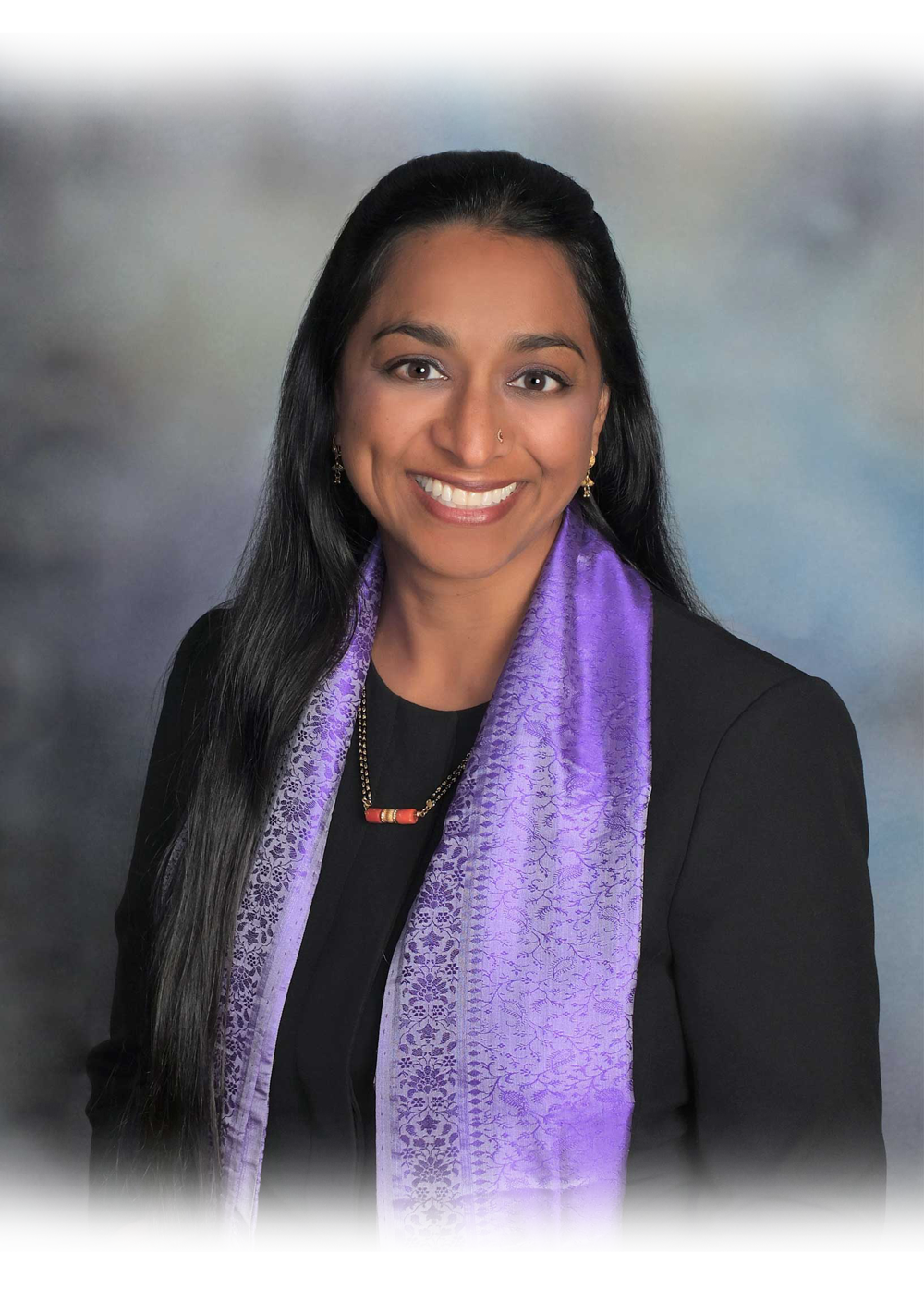
I was elected at-large to the Poway Unified Board of Education in 2016. I decided to run because I have a broad and deep commitment to my community and I want to help our younger generations realize their full potential. I saw the challenges our school district was facing and was convinced by community members that I had a specific combination of skills that could benefit Poway Unified.
There are so many issues facing public education — if you’re talking large scale, I would say base funding and underfunded mandates; if you’re talking students, I would say finding the right balance between social-emotional wellness, education success and navigating the pressures of contemporary life.
Public education provides an opportunity for everyone to better themselves, as individuals and members of a community. An educated society will be more innovative, self-reliant and compassionate. “Democracy cannot succeed unless those who express their choice are prepared to choose wisely. The real safeguard of democracy, therefore, is education.” — Franklin D. Roosevelt
I have always had a passion for civic engagement, despite my formal education in the sciences and work experience in biotechnology. Our greatest asset is our youth, and we are doing our society a great disservice by not providing a high-quality public education for all students. We can and must do better.
Truthfully, my mother. She persevered through many challenges and yet had compassion and love for all of those around her. She encouraged me to have untethered aspirations and to never underestimate my abilities. Even though she passed away when I was 14, her support and love continue to inspire me today.
I would advise new and aspiring (and even continuing) board members to take the Masters in Governance classes and keep your compass pointed to what’s in the best interest for students. If board duties become frustrating, as they do sometimes, go visit a school and reconnect with your purpose — the students in your district.



efore the light of day has emerged, the first students on the Amador County Unified School District bus route are picked up at 5:45 a.m., so they can arrive in time for class at 8:20 a.m.
The length of this bus ride is emblematic of the many challenges facing California’s rural school districts and their ability to equitably serve all students. Those challenges include high transportation costs, difficult teacher recruitment and retention, a large percentage of students in poverty, facilities funding gaps and a lack of professional development opportunities for staff.
California is home to one of the nation’s highest percentages of small rural districts and the country’s 16th largest absolute rural student enrollment, according to a report from the Rural School and Community Trust. California schools also serve the largest percentage of rural English learner students in the nation and a large majority of rural students who identify as non-white. The 2016 report also found that the state spent $5,303 per rural pupil, almost $1,000 less than the national average of $6,067 per rural pupil.



efore the light of day has emerged, the first students on the Amador County Unified School District bus route are picked up at 5:45 a.m., so they can arrive in time for class at 8:20 a.m.
The length of this bus ride is emblematic of the many challenges facing California’s rural school districts and their ability to equitably serve all students. Those challenges include high transportation costs, difficult teacher recruitment and retention, a large percentage of students in poverty, facilities funding gaps and a lack of professional development opportunities for staff.
California is home to one of the nation’s highest percentages of small rural districts and the country’s 16th largest absolute rural student enrollment, according to a report from the Rural School and Community Trust. California schools also serve the largest percentage of rural English learner students in the nation and a large majority of rural students who identify as non-white. The 2016 report also found that the state spent $5,303 per rural pupil, almost $1,000 less than the national average of $6,067 per rural pupil.



The will to protect our students and end school violence is strong, but it will take a movement of courageous and proactive school leaders stepping up and leading the shift to create a more positive school culture. Bridg-it was created, designed and constantly being tweaked to support this movement.
This year alone, total spending on school safety nationwide is in the hundreds of millions of dollars, and for good reason. In the first 21 weeks of 2018, we saw on average one school shooting per week where someone was hurt or killed. The safety climate in schools is worse when taking into consideration daily bullying and online bullying, identity threats, sexual misconduct, and other forms of violence.
A study analyzing the results of the California Healthy Kids Survey found that schools with unsafe learning environments face major financial losses. California school districts receive funding based on the average number of students in the classroom and absenteeism cuts into that funding. Approximately 10.4% of secondary school students in California reported missing school because they were bullied or felt unsafe, costing the state an estimated $276 million in one year.

Still, California’s public schools have endured nearly 40 years of decline after being among the best nationally in the 1970s. Since then, property taxes funding public schools have dwindled under Proposition 13, the number of students in classrooms has grown, the rise of charter schools has further drained funds and resources, and there is a growing teacher shortage as costs of living and housing escalate. Meanwhile, districts across the state experienced costly teacher strikes and labor unrest this spring.
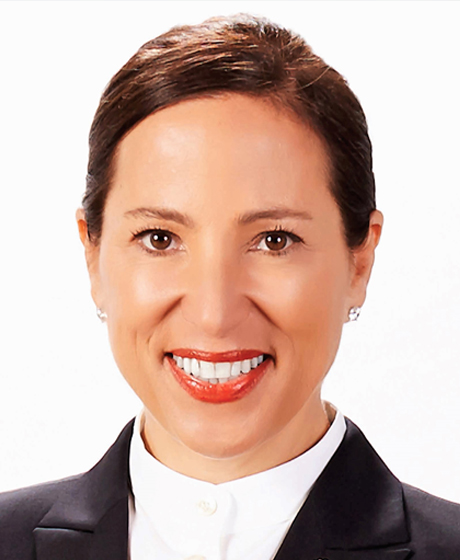
worn in Jan. 7, 2019, as the first woman elected Lieutenant Governor in California history, Eleni Kounalakis will look to play a key role in helping the state better connect its early, K-12 and higher education systems. As Lieutenant Governor, Kounalakis sits on the California State University Board of Trustees and University of California Board of Regents. She recently finished a statewide “listening tour” of public universities across the state.
California Schools talked with Kounalakis about her passion for education, diplomatic experience overseas and her historic campaign victory.
Armond Aghakhanian
Carmel USD
Barbara Dill-Varga
Central Union HSD
Todd Evangelist
Culver City USD
Kelly Kent
Summer McBride
Cupertino Union SD
Kristen Lyn
Cypress ESD
Anne Silavs
Davis Joint USD
John Bowes
Rory Livingston
Vina Paramo-Alonzo
Lawndale ESD
Betsy Hamilton
Lucerne Valley USD
Ruben Medina
Meadows Union ESD
Ernesto Pinedo
Milpitas USD
Amin Fazal
Cheryl Jordan
Monterey COE
Janet Wohlgemuth
Judy Pennycook
Elvia Rivas
Irma Sanchez
Sarah Galvez
Orinda Union ESD
Cara Hoxie
Hillary Weiner
Palo Verde USD
Alfonso Hernandez
Parlier USD
Elizabeth Tienda
Patterson Joint USD
Carlos Fierros
Jacqui Rice
Mark Becker
Santa Ana USD
John Palacio
Santa Paula USD
Pam Thompson
Santa Rita Union ESD
Diego Jacob Sandoval
Sarah Turner
Shelly Morr
Savanna ESD
John Shook



